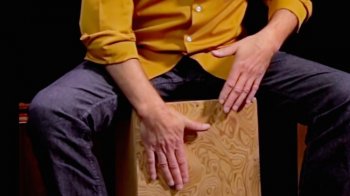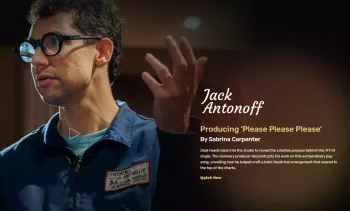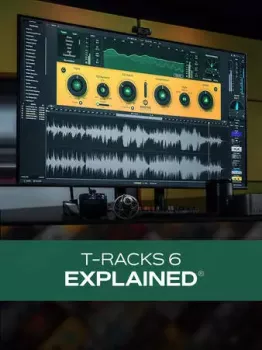P2P 22 Dec 2015 | 1.07 GB
英文简介:
Have fun learning to play this unique hand drum. Improve your confidence, and expression on the Cajon!
This course is designed to help students learn to play the Cajon. This unique hand drum is fun and easy to play! How To Play The Cajon: For Beginners is a step by step course that will introduce you to the basic tones of this amazing instrument and provide you with a number of patterns and exercises for you to practice.
Each video lecture will provide students with clear and easy to follow instructions. The learning process is gradual and each lesson builds upon the other. This course also includes an easy to read pdf of the exercises and patterns featured throughout the video in music notation form.
Hand drumming is an easy and fun form of personal expression. Students will gain self confidence, improve concentration and relieve stress by taking this course!
What are the requirements?
You will need a Cajon to practice with. You can buy or rent one from your local music store. Also, bring your energy and enthusiasm!
What am I going to get from this course?
Over 24 lectures and 1.5 hours of content!
By the end of this course you will have a basic understanding of how to play the Cajon. You will have a solid understanding of the basic sounds of this hand drum and how to play some basic rhythms and patterns.
Improve you self confidence, and learn to express yourself on this amazing hand drum!
What is the target audience?
If you've ever wanted to play a hand drum or if you just want to brush up on your basic technique on the Cajon, this is the course for you.
If you are an advanced Cajon player this course may not be challenging enough for you.
Curriculum
Section 1: Section 1: Introduction To The Cajon
Lecture 1 Introduction To The Cajon 01:36
This lecture is an introduction to the Cajon. It discusses where the drum originates, what materials it's made from and it's use traditionally and in contemporary culture.
Section 2: Section 2: The Playing Position
Lecture 2 The Playing Position 01:31
Section 3: Section 3: The Bass Tone
Lecture 3 The Bass Tone 03:37
Section 4: Section 4: The Slap Tone
Lecture 4 The Slap Tone 02:48
Section 5: Section 5: Basic Patterns for the Bass and Slap Tone
Lecture 5 Basic Patterns for the Bass and Slap Tone (Introduction) 00:54
Lecture 6 Basic Patterns For The Bass and Slap Tone (Quarter Notes) 03:48
Lecture 7 Basic Patterns For The Bass and Slap Tone (Quarter Notes Continued) 02:58
Lecture 8 Basic Patterns For The Bass and Slap Tone (Quarter and Eighth Notes) 03:53
Lecture 9 Basic Patterns For The Bass and Slap Tone (Quarter and Eighth Notes Continued) 04:10
Lecture 10 Basic Patterns For The Bass and Slap Tone (Patterns in 3) 04:32
Lecture 11 Basic Patterns For The Bass and Slap Tone (Patterns in 3 Continued) 01:56
Section 6: Section 6: The Accent Tone
Lecture 12 The Accent Tone 01:56
Section 7: Section 7: Basic Patterns for the Bass, Slap and Accent Tone
Lecture 13 The Bass, Slap and Accent Tone (Quarter Note Exercises) 02:06
Lecture 14 The Bass, Slap and Accent Tone (Quarter Note Exercises Continued) 06:35
Lecture 15 The Bass, Slap and Accent Tone (Quarter and Eighth Note Exercises) 03:40
Lecture 16 The Bass, Slap and Accent Tone (Quarter and Eighth Note Exercises Continued) 03:42
Lecture 17 The Bass, Slap and Accent Tone (Quarter and Eighth Note Exercises Final) 03:22
Lecture 18 The Bass, Slap and Accent Tone (Patterns in 6) 05:07
Lecture 19 The Bass, Slap and Accent Tone (Patterns in 6 Continued) 03:19
Lecture 20 The Bass, Slap and Accent Tone (Patterns in 6 Final) 06:39
Section 8: Section 8: Traditional Rhythms
Lecture 21 The Rumba (Flamenco) 05:06
Lecture 22 The Marinera 02:40
Section 9: Section 10: Multi Tasking
Lecture 23 Multi Tasking 02:34
Section 10: Section 11: Conclusion
Lecture 24 Conclusion 00:51







评论0